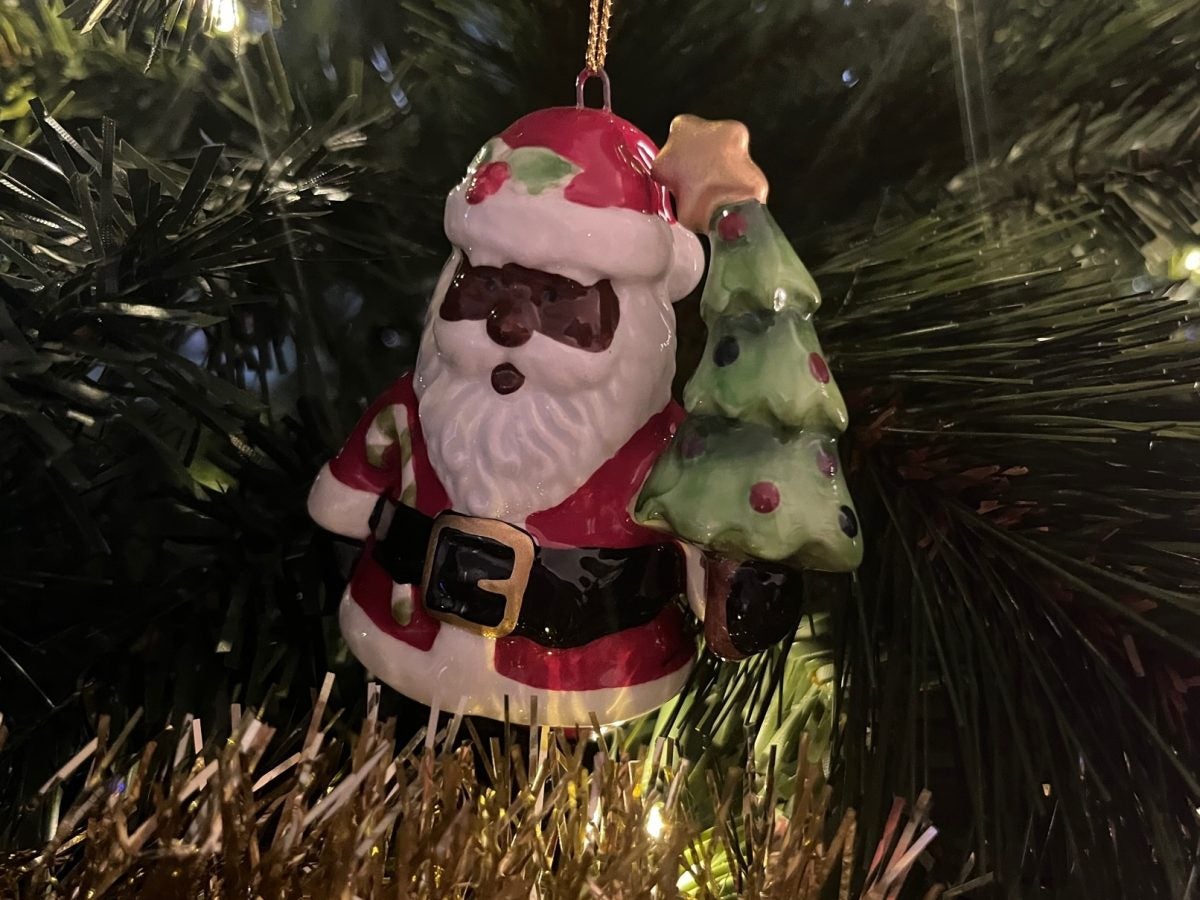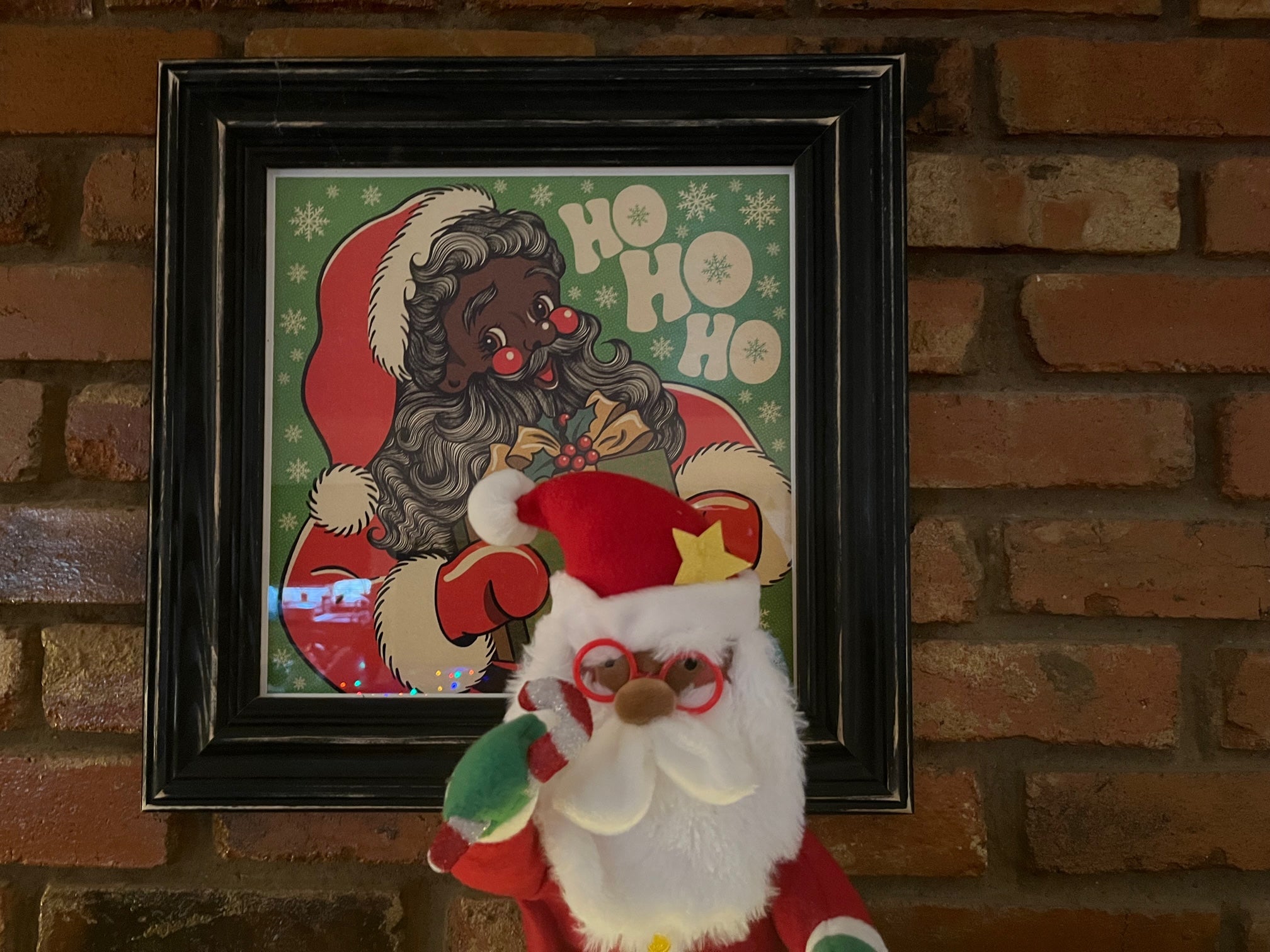
I’ve ridden and walked by a neighborhood thrift store for two years. I always told myself I’d stop by, but urgency, tiredness, or their hours of operation have kept my car tut-tutting past the building. That is, until one autumn afternoon. I walked in with no purpose, running my finger along the spines of $1 cookbooks and children’s stories. As I wandered, I came across what seemed like an anomaly; a Black nativity set. A few pieces were missing, likely why it’d made its way to the shop in the first place. But the key players were there, and their clay coils were handled with care, so I scooped up the vulnerable clay figurines, handed the clerk $5 for a sliver of someone’s old joy, and walked out of the store with a toothy grin.
My Great Aunt Mae, the Christmas queen of Queensborough, used to glide down her home’s hallway in a fleecy pastel robe, the distant echoes of children’s laughter still reverberating from her walls. Before her health faltered, she would fill her front lawn with animatronic Christmas decor. Wire reindeer would simulate eating as colored lights danced around her shingles. Inside was no less of a spectacle–her den was devoted to holiday art. The tree scraped the ceiling and had great, breakable balls that would weigh down the branches. On the fireplace would rest several Black figures: Mr. and Mrs. Claus, ornate angels with gold-veined transparent wings, and a collectible Michelle Obama doll. Accessing Black toys wasn’t always easy; she often had to paint the faces brown.
When I started my own family in 2018, I was adamant about following in my Aunt Mae’s footsteps. For my first Christmas as a mother, I scoured store shelves for Black nutcrackers, ornaments, angels, and wall decor. I quickly understood why my aunt revised her figurines’ faces—Black Christmas trinkets can be challenging to find. I secured a brown-skinned ballerina ornament for my daughter’s first Christmas, but that was all I came home with.

Representation is a slippery slope. It’s led us to celebrate the appointment of Black people to controversial job posts (like high-ranking police officers) and, at times, may have discouraged critical thought. I shy away from giving it too much faith because of what it’s been allowed to uphold. At the same time, I won’t ignore the impact it can have. Watching someone who looks like you achieve what you believe to be impossible can inspire you to actualize your dream. As for my family’s choice to surround my siblings and me with Black figures, I think it was more of a statement. They didn’t want us to grow up like Pecola Breedlove, drinking up whiteness until it made us sick. They wanted us to know exactly who we were and find comfort and pride in that knowing. I want the same for my babies.
Since my first Christmas as a mother, I’ve continued to fill my home with Black Christmas trinkets. A pillow depicting the Clauses on ice skates makes our sectional all the cozier. This year’s tree is home to a felt angel, a ceramic Santa, and another Santa giving Mrs. Claus a smooch. Sourcing the items has also become a community effort. In 2021, my friend’s mother sent me a Santa Claus print and a few ornaments. This year, Black-owned brand Sunny&Ted blessed my family with a cookie dish in Santa’s image, along with cups and a platter featuring drawings of lithe Black dancers performing “The Nutcracker.” As I type, my daughter is sliding across the floor in Santa socks. As soon as my son comes home from his grandmother’s house, he’ll climb onto the sofa and plop beside Christmas’s most famous skating couple.

Though I don’t have to revise the faces of dolls like my great aunt, I’ve still inched my shopping cart down store aisles, hoping to find another Black knickknack to bring home. I wait for the day I won’t have to use my eagle eye in every store. One day seeing ourselves reflected will be a regular occurrence, not a welcome surprise.
In November, I asked my daughter what Santa Claus looked like. “Brown,” she said, with all of the confidence God and I gave her. He sure is, baby. He sure is.
